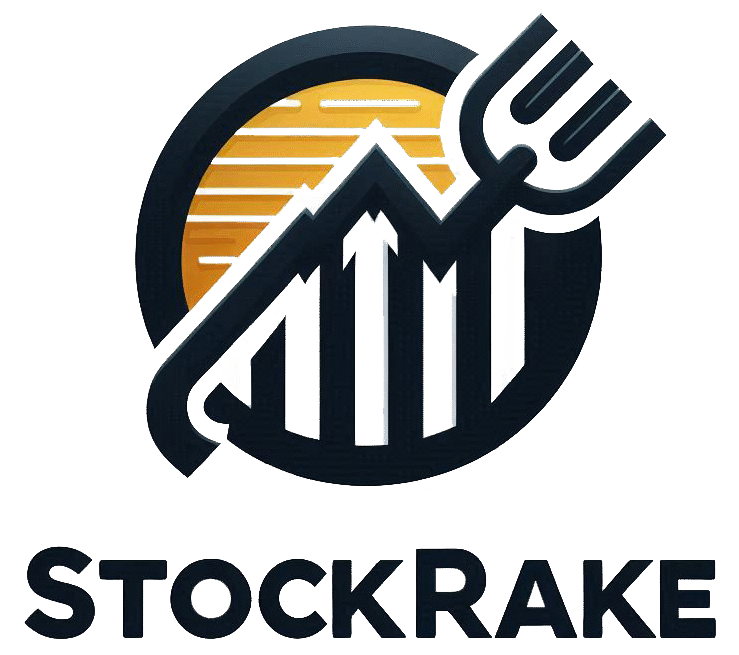Let’s be honest — navigating today’s stock market can feel like trying to solve a 1,000-piece puzzle in the dark. Every week, headlines scream about the “next big thing,” and yet, many investors are left wondering where the real opportunities lie.
If you’re tired of chasing hype stocks that fizzle faster than they rise, it may be time to shift focus to something more stable — value investing. This classic strategy, championed by legends like Warren Buffett, continues to deliver steady, long-term rewards while others get caught in short-term noise.
So, which value stocks are analysts favoring this month? Let’s unpack the strategies, metrics, and top picks driving investor confidence right now.
Why Value Investing Still Matters
Value investing has been around for nearly a century, and it’s still thriving — especially in uncertain markets. The idea is simple: buy strong, undervalued companies trading below their intrinsic worth, then hold them until the market catches up.

Why It Works
- Built on Fundamentals: Value stocks are backed by solid earnings, assets, and cash flow — not hype.
- Less Volatility: They often outperform when growth stocks stumble.
- Compounding Power: Reinvested dividends and long-term appreciation can quietly build wealth.
Even in 2025, as AI stocks and tech IPOs dominate headlines, analysts argue that value remains the unsung hero of long-term investing.
Warren Buffett’s Way: The Timeless Blueprint
When people think “value investing,” one name immediately comes to mind — Warren Buffett. His strategy is as straightforward as it is effective:

“It’s far better to buy a wonderful company at a fair price than a fair company at a wonderful price.” — Warren Buffett
Buffett’s approach emphasizes patience, business quality, and intrinsic value. He doesn’t chase trends; he finds sustainable enterprises and holds them through decades of market cycles.
A few of his guiding principles:
- Focus on companies with economic moats (strong competitive advantages).
- Look for consistent earnings and honest management.
- Avoid debt-heavy firms that can’t weather downturns.
In 2025, that philosophy remains rock solid — and it’s the same mindset analysts are using to identify today’s best value stock picks.

Also Read: How Do Stock Splits Affect Your Portfolio?
Growth vs. Value: What’s the Real Difference?

To the casual investor, “growth” and “value” might sound interchangeable — but they’re very different beasts.
| Factor | Growth Stocks | Value Stocks |
|---|---|---|
| Profile | High potential, fast-growing | Stable, established companies |
| Valuation | Often expensive (high P/E) | Priced below intrinsic value |
| Risk Level | Higher volatility | Generally lower risk |
| Dividends | Rarely paid | Often consistent |
| Example Sectors | Tech, biotech | Finance, healthcare, energy |
Growth stocks are like shiny new gadgets — exciting but risky. Value stocks, meanwhile, are the dependable workhorses quietly compounding returns in the background.

Also Read: What Stocks Are Making Headlines After the Latest CPI Report?
Playing the Long Game
Value investing isn’t a sprint — it’s a marathon. Success comes from buying good companies when they’re overlooked, then waiting patiently for the market to recognize their worth.

It’s not glamorous, but it works. Studies from Morningstar and Forbes consistently show that value portfolios outperform over 10+ year periods, even when growth leads in short bursts.
How Analysts Spot Great Value Stocks
Top analysts don’t rely on gut feelings — they rely on data and discipline. When searching for undervalued gems, they dig deep into company financials, industry trends, and broader economic signals.
Key Metrics They Watch
- P/E Ratio (Price-to-Earnings) – A low P/E compared to industry peers can indicate undervaluation.
- P/B Ratio (Price-to-Book) – Reveals how much investors are paying for a company’s net assets. A P/B under 1 may signal a bargain.
- Dividend Yield – Consistent, sustainable dividends are a hallmark of strong, shareholder-friendly businesses.
- Debt-to-Equity Ratio – Healthy balance sheets matter. Too much debt can crush a company in downturns.
👉 Tip: Cross-check these metrics using reliable sources like Morningstar or Yahoo Finance.
Looking at the Bigger Picture
Analysts also weigh macroeconomic conditions. In 2025, several sectors are gaining traction due to global and domestic shifts:
- Healthcare: Aging populations and biotech innovation fuel long-term demand.
- Banking: Stabilizing interest rates create fresh profit opportunities.
- Energy: Global supply concerns keep oil and gas prices attractive.
These trends are shaping this month’s top value stock recommendations.
Top Value Stocks Analysts Like This Month

Here’s a closer look at the companies making analysts’ “buy” lists for their solid fundamentals, reasonable valuations, and long-term growth potential.
1. Berkshire Hathaway (BRK.B)
Why Analysts Like It: Buffett’s conglomerate remains a fortress of financial strength. With a massive cash reserve exceeding $150 billion, Berkshire is positioned to pounce on opportunities when markets dip.
- P/E Ratio: ~9.5
- Cash Reserves: $150B+
- Stability: Exceptional diversification across insurance, energy, and consumer brands
Expert Insight: Many analysts view Berkshire as a “value ETF in disguise” — diversified, defensive, and built for compounding.
2. Johnson & Johnson (JNJ)
Why It Stands Out: Healthcare rarely goes out of style. J&J’s robust pharmaceutical pipeline and consumer health divisions make it a cornerstone of any defensive portfolio.
- Dividend Yield: ~3.3%
- P/E Ratio: ~14
- Market Cap: $350B+
Bonus: J&J has raised its dividend for 60 consecutive years — a hallmark of reliability.
3. JPMorgan Chase (JPM)
The Banking Giant Rebounds: As interest rates stabilize, major banks like JPMorgan are poised to expand lending and boost profitability.
- Dividend Yield: ~2.4%
- Earnings: Solid and steady
- Debt Management: Conservative and well-structured
Analyst Take: CEO Jamie Dimon’s leadership and the bank’s digital transformation strategy make JPMorgan a prime example of long-term financial strength.
4. Pfizer (PFE)
What’s the Story? After the pandemic boom faded, Pfizer’s stock cooled — but analysts see deep value here.
- P/E Ratio: ~10
- Dividend Yield: 5.5%
- Future Potential: Promising drug pipeline in oncology and vaccines
Pro Insight: With cash reserves from its COVID windfall, Pfizer is reinvesting in R&D — positioning itself for the next medical breakthrough.
5. Intel (INTC)
Chip Comeback in Progress: Intel is rebuilding its competitive edge by investing billions in U.S. semiconductor manufacturing.
- P/B Ratio: 1.2
- P/E Ratio: 12
- Outlook: Expected turnaround by 2025–2026
Why It Matters: With governments incentivizing domestic chip production, Intel could benefit from both policy support and market demand.
6. CVS Health (CVS)
More Than a Pharmacy: CVS has evolved into a healthcare ecosystem, offering pharmacy, insurance, and primary care services.
- Dividend Yield: ~3.8%
- Cash Flow: Strong and growing
- Growth Plans: Expanding into full-service healthcare
Analyst View: CVS trades below its intrinsic value and has long-term tailwinds from healthcare digitization.

Also Read: What Are the Most Profitable Day Trading Setups?
Hidden Value Gems to Watch
Beyond the big names, analysts are highlighting several under-the-radar opportunities worth keeping on your radar:
- Regional Banks: Fifth Third Bank (FITB) and KeyCorp (KEY) may rebound as local economies stabilize.
- Energy Giants: Chevron (CVX) and ExxonMobil (XOM) continue to deliver reliable dividends amid high energy prices.
- Global Picks: Toyota (TM) and Nestlé (NSRGY) offer steady growth and diversification for international investors.
Red Flags: What to Avoid in Value Investing

Not every “cheap” stock is a bargain. Analysts warn investors to look out for value traps — companies that appear undervalued but have deeper issues.
Watch out for:
- Declining revenue or no clear growth plan
- Excessive debt with poor cash flow
- Unsustainable dividend yields that strain finances
If something seems too good to be true, it probably is.
New to Value Investing? Start Smart
If stock picking feels intimidating, you’re not alone. The good news? You can ease into value investing through funds and ETFs designed to do the research for you.
Beginner-Friendly Options
- Vanguard Value ETF (VTV) – Broad exposure to U.S. value stocks.
- iShares Russell 1000 Value ETF (IWD) – Diversified across financials, healthcare, and energy.
Pro Tips
- Diversify: Spread investments across sectors to reduce risk.
- Reinvest Dividends: Compounding over time can dramatically grow returns.
- Stay Informed: Follow reputable finance sources like Investopedia and Forbes.
Conclusion: Steady Wins the Race
In a market obsessed with the next big thing, value investing offers a refreshing, proven path to long-term success. Analysts this month are doubling down on companies that are not just undervalued — but built to last.
Whether you’re a beginner or a seasoned investor, the lesson remains the same: Patience and discipline pay off. The best time to plant a value stock tree? Years ago. The second-best time? Today.
FAQs: Value Stock Investing in 2025
Q1. What defines a value stock?
A value stock trades below its intrinsic worth, often with stable earnings, strong cash flow, and a history of dividends.
Q2. Are value stocks safe during market downturns?
Generally, yes. Their stability and dividends make them more resilient compared to high-flying growth stocks.
Q3. What’s a good P/E ratio for value investing?
It varies by sector, but typically a P/E below 15 is considered attractive for value seekers.
Q4. How often should I review my portfolio?
Quarterly reviews are ideal to ensure fundamentals remain strong and no red flags emerge.
Q5. Can I mix growth and value stocks?
Absolutely. A balanced portfolio often includes both for diversification and long-term stability.


